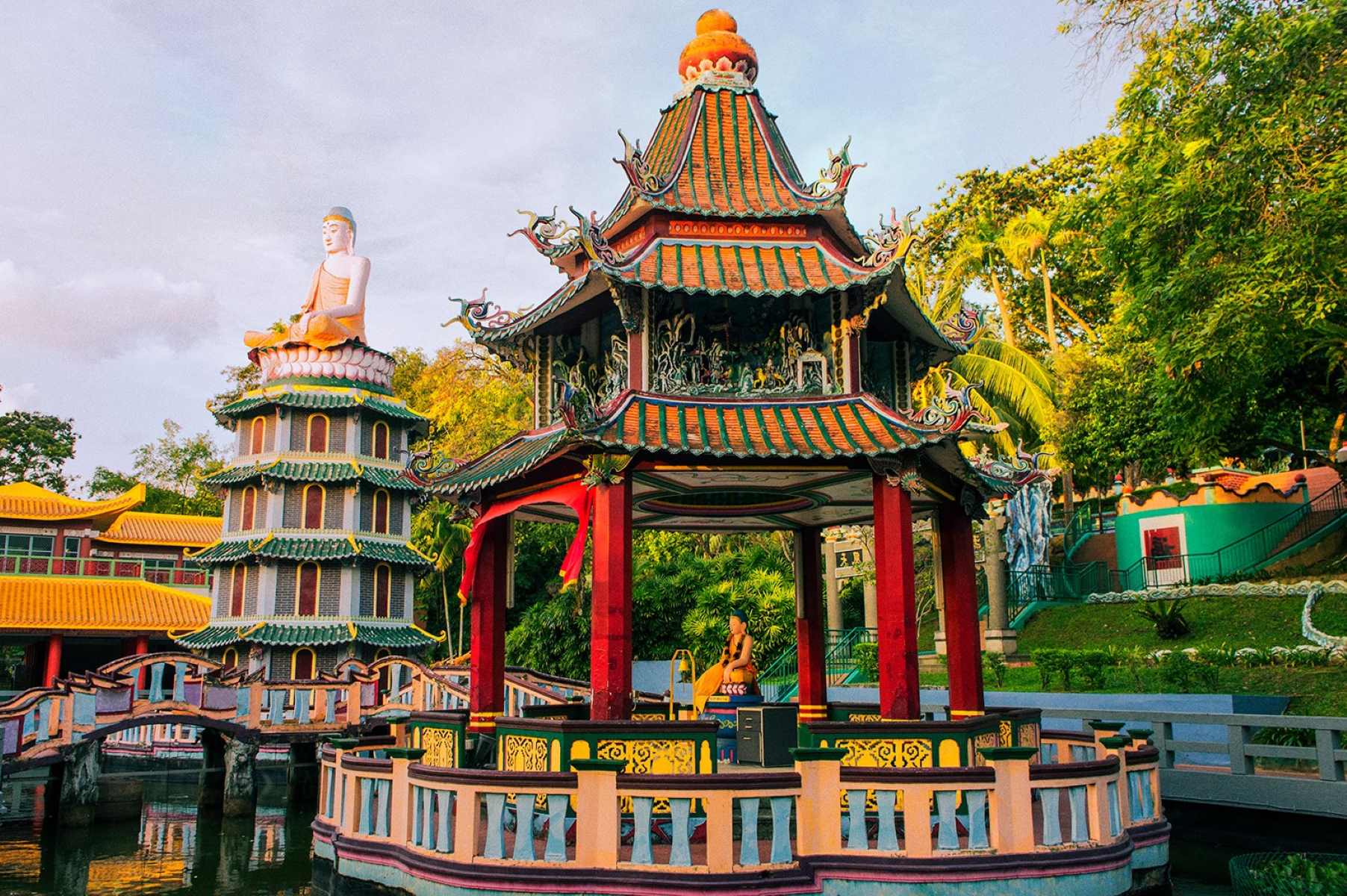Secrets Of Haw Par Villa: Singapore’s Most Bizarre Theme Park

Have you ever heard of Haw Par Villa? This unique theme park in Singapore stands out for its strange, sometimes eerie attractions. Unlike other parks filled with rides and games, Haw Par Villa offers a journey through Chinese folklore, mythology, and history. Statues and dioramas depict scenes from ancient tales, including the famous Ten Courts of Hell. Some displays might seem odd or even creepy, but they all tell stories that have been passed down for generations. If you’re looking for something different from the usual tourist spots, Haw Par Villa promises an unforgettable experience. Ready to learn more about this one-of-a-kind destination?
Welcome to Haw Par Villa
Haw Par Villa, located in Singapore, is unlike any other theme park. It’s a place where myths, legends, and folklore come alive through over 1,000 statues and 150 dioramas. This park, built in 1937 by the Aw brothers, creators of Tiger Balm, offers a unique blend of culture, history, and a touch of the bizarre. Ready to explore? Let’s dive into some of the most intriguing spots within this eccentric park.
The Ten Courts of Hell
One of the most famous and eerie attractions in Haw Par Villa is the Ten Courts of Hell. This section graphically depicts the Buddhist concept of hell, showing the punishments for various sins. It’s both fascinating and chilling.
- First Court: King Qinguang judges the dead and decides their fate. Good souls go to paradise, while sinners face trials.
- Second Court: Sinners are punished by being thrown into a volcanic pit or frozen in ice.
- Third Court: Here, liars and cheats have their tongues cut out.
- Fourth Court: Thieves and those who disrespected their elders are pounded by a stone mallet.
- Fifth Court: Corrupt officials and those who caused harm to others are boiled in oil.
- Sixth Court: Those who committed murder or robbery are sawn in half.
- Seventh Court: Adulterers and rapists are thrown onto a hill of knives.
- Eighth Court: Those who spread rumors or sowed discord are dismembered.
- Ninth Court: Those who neglected their duties or betrayed trust are crushed under boulders.
- Tenth Court: Finally, souls are reincarnated based on their past deeds.
The Journey to the West
Another captivating section of Haw Par Villa is dedicated to the classic Chinese novel, "Journey to the West." This area brings the adventures of the Monkey King and his companions to life.
- Monkey King’s Birth: A statue shows the Monkey King emerging from a stone egg.
- Pigsy’s Transformation: Pigsy, a character cursed for his gluttony, is depicted in his pig form.
- Sandy’s Redemption: Sandy, a river ogre, is shown seeking redemption for his past sins.
- Buddha’s Palm: A giant hand represents Buddha’s intervention in the Monkey King’s journey.
- Heavenly Battle: Statues depict the epic battle between the Monkey King and the celestial army.
The Eight Immortals
The Eight Immortals are a group of legendary figures in Chinese mythology, each with unique powers. Haw Par Villa features detailed statues of these fascinating characters.
- Immortal Woman He: Known for her healing powers, she is depicted holding a lotus flower.
- Iron-Crutch Li: Often shown with a crutch and a gourd, he symbolizes resilience.
- Lan Caihe: This androgynous figure is depicted with a basket of flowers, representing youth and beauty.
- Lü Dongbin: A scholar and swordsman, he is shown with a sword to ward off evil.
- Han Xiangzi: Depicted playing a flute, he represents joy and music.
- Zhang Guolao: Often shown riding a donkey backward, symbolizing wisdom and eccentricity.
- Cao Guojiu: A royal relative, he is depicted with castanets, symbolizing nobility.
- Zhongli Quan: Shown with a fan, he represents the power to revive the dead.
The Aw Brothers’ Legacy
Haw Par Villa also pays tribute to its founders, the Aw brothers, who created this park to share Chinese culture and values.
- Tiger Balm Gardens: Statues and dioramas depict the history of Tiger Balm, the famous ointment created by the Aw brothers.
- Aw Boon Haw and Aw Boon Par Statues: Life-sized statues of the brothers stand proudly in the park, honoring their contributions.
The Strange and Unusual
Haw Par Villa wouldn’t be complete without its collection of oddities and bizarre attractions. These quirky spots add to the park’s unique charm.
- Laughing Buddha: A giant statue of the Laughing Buddha greets visitors with a cheerful smile.
- Mermaid: A statue of a mermaid, blending myth with reality.
- Crab with a Human Face: One of the park’s most peculiar statues, it’s a crab with a human face, symbolizing the consequences of bad karma.
- Giant Gorillas: Statues of giant gorillas add a touch of the wild to the park.
- The White Snake: A statue depicting the legend of the White Snake, a tale of love and betrayal.
Haw Par Villa is a treasure trove of culture, history, and the bizarre. Each corner of this park offers something new and unexpected, making it a must-visit for anyone in Singapore.
Why You Should Visit Haw Par Villa
Haw Par Villa is a must-see for anyone visiting Singapore. This unique theme park offers a mix of culture, history, and art that you won't find anywhere else. The intricate statues and dioramas tell stories from Chinese mythology and folklore, making it both educational and entertaining.
Walking through the park, you'll encounter vivid scenes that range from the beautiful to the bizarre. It's a place where you can learn about moral lessons, ancient tales, and even a bit of Singapore's own history.
Whether you're a history buff, an art lover, or just looking for something different to do, Haw Par Villa has something for everyone. Don't miss out on this one-of-a-kind experience. Make sure to add it to your travel itinerary.

